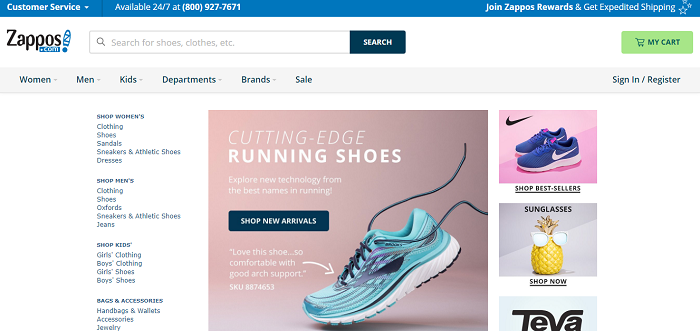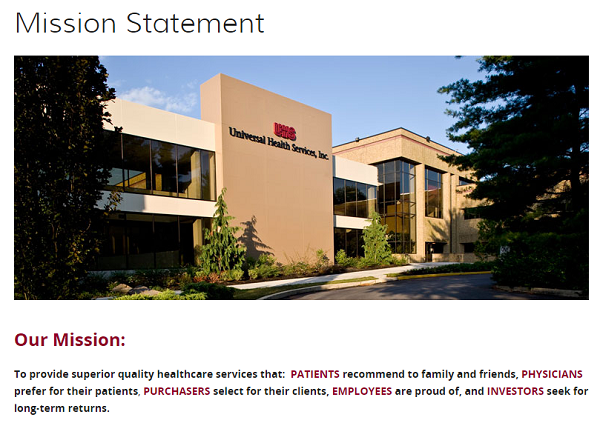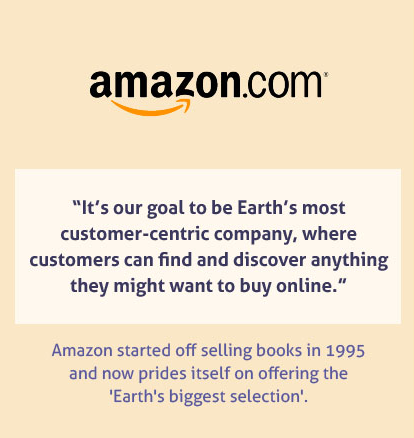 A marketing plan is a must-have for every business owner who wants to build a viable business in the long-term.
A marketing plan is a must-have for every business owner who wants to build a viable business in the long-term.
A solid marketing plan helps you determine which customers to target and how to reach and win them. It also promotes customer retention.
Some businesses gain scores of customers on a regular basis, but they also struggle to keep them. It’s because they lack a robust marketing plan.
A perfect plan should provide a solution that helps you keep current customers happy. It’s impossible to gain a large market share if present customers aren’t happy.
Acquiring new customers is easy when old customers are satisfied with your product or service.
Marketing alone doesn’t guarantee success in the business world. You need a plan.
In this article, you’ll learn how to create a marketing plan that builds your business.
Write out your preferred marketing strategies
 This is the first important step when creating a marketing plan.
This is the first important step when creating a marketing plan.
There are lots of marketing strategies available to business owners today.
Some strategies are relevant to your business. Your competitors are using them.
Some strategies are not so relevant to your business.
While many strategies are not applicable to your business at all.
Research the web to find marketing strategies that can send you valuable clients.
For instance, I’m a big fan of word-of-mouth (WOM) marketing.
WOM marketing is a form of promotion in which customers recommend your product to their friends. They talk about your product. You don’t pay them to do that.
For people to talk about your brand, you have to deliver a remarkable customer experience. That doesn’t happen by accident. It is planned into the marketing.
Zappos is a perfect example of a company that built its business on word-of-mouth marketing.

The company exceeded expectations in customer service. Their free 365-day return policy blows competitors out of the water. That is why customers can’t stop talking about Zappos.
There are other marketing strategies like:
- Email marketing
- Social media marketing
- PPC advertising
- Search engine optimisation
- Content marketing
- Affiliate marketing
- Video marketing
- Retargeting
Create a mission statement
In the below image, you’ll see the mission statement of Universal Health Services (UHS).

A company grows when it helps its customers attain their goals.
For UHS, there are five groups of people their business serves.
- Patients
- Physicians
- Purchasers
- Employees
- Investors
These groups of people were recognised in their mission statement.
Why do you need a mission statement?
How does it help your marketing?
A written mission statement outlines the purpose of your business’s existence.
In doing so, it provides the framework for every department in the organisation. And that includes the marketing department.
Everyone in your organisation must work towards the goal that is in the mission statement.

For example, Google’s mission is to organise the world’s information and make it universally accessible and useful.
Note that they didn’t mention search.
Perhaps, you created a mission statement when developing your business strategy. Emphasise that core mission in your marketing plan.
The mission should reflect on your product quality, pricing, service, marketplace position, use of technology and your relationships with customers, employees, suppliers, competitors and the community.

Define your target market
Your target market is the set of people you’re selling to.
You can’t afford to market to everyone.
There is a particular group of people who are in dire need of your product. Who are they?
Defining your target market means determining their age, sex, location, lifestyle, education, needs (or pain points), and any other factors that separate your ideal customers from the general public.
I’m a big fan of using pain points to determine my best customers.
If you’re selling a travel related product, you don’t want to target introverts or individuals who rarely leave their homes. What you sell doesn’t address their pain points.
People who currently travel a lot for fun have some pain points your travel product may help solve.
Do an in-depth research to learn more about people who want your product.
For example, research found that older women were more likely than older men to experience disability. Forty-three percent and forty percent respectively.
If your service is for people with disabilities, it means your marketing should target older women rather than older men. Dig deeper to find your target market.
JetBlue target market is low budget travellers who want to fly comfortably for cheap.

Analyse the competition
Analysing the competition helps you determine the strengths and weaknesses of the competitors. It helps you in choosing the best marketing strategies that give you an advantage.
As much as recognising competitor’s weaknesses and strengths, you should also know yours.
Who are your current and potential competitors?
For example, if you’re operating a restaurant, nearby restaurants are competitors. Bars, coffee shops, and burger joints are potential competitors.
How are your competitors driving customers to their stores or sites? What strategies are they using?
Digital marketing tools like SEMrush and Ahrefs will tell you the keywords that are driving most of their search traffic.
SimilarWeb will tell you which channels the majority of their online views come from, compared to each other.
SimilarWeb shows the site I just checked owned 30.68% of its traffic to direct visits, 24.01% from other sites, 38.81% from search engines, 3.54% from social media, 2.92% from email marketing, and 0.3% from display advertising.

SEMrush (mentioned already above) will also tell you competitors’ best performing ads on Google AdWords.
If your competitors have offices or stores that are open to the public, pay a visit there. See for yourself how competitors are enticing customers.
Note that you don’t have to analyse every competitor. Pick the top ten current and potential competitors and analyse them.
What are the things you believe you can do better than them?
Write that into your marketing plan.
Create a unique selling proposition (USP)
You’ve probably heard the old saying “differentiate or die.”
There’s a killer competition in almost every industry you can think of.
To build a successful company in our competitive world, you have to be unique and fill a special niche.
Federal Express (FedEx) dominated the package shipping industry and established itself as a leader with this USP:
“When it is absolutely, positively has to be there overnight.”
Domino’s Pizza became a force in the restaurant chain industry with this USP:
“Pizza delivered in 30 minutes or it’s free.”
The above USP is worth a billion pounds to Domino’s Pizza.
Your USP should be so persuasive that it can be used in an advertisement that promotes your product.
TOMs’ USP is compelling. They say that “with every product you purchase, TOMs will help a person in need.” They term it One for One.

Many consumers buy TOMs shoes because they want to help people in need.
Before writing your USP, you should know the three biggest benefits your product or service offers. What are they?
Then write a USP that makes a bold promise to prospects.
Don’t forget the unique part. It should promise potential customers something they won’t get from the competitors.
Your USP shouldn’t be long. The most powerful USPs are written in one short sentence.
Develop a pricing strategy
Your pricing should be determined by your business goals.
If your goal is to break into a competitive market, selling at a low price will help you attract lots of customers very quickly.
If you want prospects to see your company as a luxury brand, charging premium prices may help achieve that. But you also have to ensure that the value they get matches the money paid.
For example, Apple charges premium prices for their products. Many of their users will tell you that competitors can’t match the experience they get from Apple.
There’s also the economy pricing strategy where you offer discounts to first-time buyers. Price returns to normal after they become customers. This pricing strategy makes your product attractive to new customers.

Although, you must deliver an exceptional customer experience if you want them to continue buying your products or using your services.
Bundle pricing is another pricing strategy I see a lot of businesses use today.
It works like this:
You sell multiple products for a lower rate than consumers would face if they were to buy each product individually.
This pricing strategy is effective for selling a lot of products together. It frees up space in the storage facility if you’re selling physical items. It increases your revenue per customer if you’re selling services.
Create a promotional plan
Many business owners confuse a marketing strategy with a promotional plan. They are not the same thing.
Facebook marketing is a strategy. The blueprint that shows how you intend to use Facebook to drive sales is your promotional plan.
Above, I advised that you write out all the marketing strategies you want to use.

Let’s assume that you decided to rank SEO as your number one marketing strategy.
What’s your promotional plan for SEO?
Your promotional plan should contain details about:
- How you intend to build backlinks to your website
- What keywords (phrases that are relevant to your business) you want to rank for
- Who will write content to help rank on search engines
Now if you’re using Facebook marketing, your promotional plan should contain details about:
- How much you want to spend on Facebook advertising
- What demographics you want to target with your ads
- What kind of offers you want to present your Facebook fans in exchange for their email addresses
You get the idea?
A promotional plan (also an action plan) goes into more detail on how you intend to use a marketing strategy.
KF Beauty launched the WUNDER2 line in the UK in 2015 and used Facebook advertising. They saw a 9X increase in sales generated from new customers within the campaign.

Facebook marketing was the strategy. The process of creating and tracking the ads was part of the promotional plan.
Set a marketing budget
A marketing plan is useless without a budget to implement it.
I’ve seen small business owners create a marketing plan, but they have no idea of where to get funds for the plan. It’s like building a car and not having money to put fuel into the engine.
It’s crucial that you have a budget to put your plan into action.
The best way to approach this is to set a monthly or yearly marketing budget.
Everyone has heard the phrase “You have to spend money to make money.” That applies to marketing too.
For each marketing strategy included in your plan, you should allocate a good-enough capital to it.
The more marketing strategies you have, the more money you need.
I strongly advise that you start with two to three strategies. That way, you don’t get lost in your plan, and each strategy gets enough funds to help them produce real results.

Know the marketing metrics you want to track and improve
Right inside your marketing plan, establish the important marketing metrics that matter to you.
The number of sales is the most important marketing metric. If a marketing strategy isn’t generating enough sales to justify your investment in it, then it’s a waste of time.
How many sales were you able to generate last month or week?
If your weekly sales numbers are dropping, then there’s a problem.
Another important metric you want to watch is the number of people visiting your site.
Your site is your store or office in the digital world. It’s where people can learn about your products and services.
When more people are entering your digital office, it means your marketing is working for you.
If no one or a very few people are visiting your digital office, it indicates a low awareness level.
The conversion rate is another important metric you should track.
You get this metric by dividing the number of new customers in a period by the number of people that visited your site in the same period and multiplying by 100.
For example, 20 sales divided by 100 visitors and multiplied by 100 is 20%.
If your website receives a lot of visitors and none or a tiny number of them are becoming customers, that’s a problem too. It means your site has a bad conversion rate.
Maybe, many of those visitors aren’t interested in your product.
Without tracking and improving the critical marketing metrics that matter to the future of your company, there’s no way of knowing what’s wrong and where.
Do you want to create a great marketing plan that grows your business?
That is what we do at Grow. Contact us today to start growing your business.
Thank you for reading. Please share this article with your friends on social media.
Discover
The 12 Marketing Secrets of Fast-Growth Companies
Find out what they do to achieve outrageous business success

Get your free copy

 By
By 
Very good article.